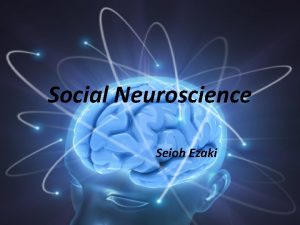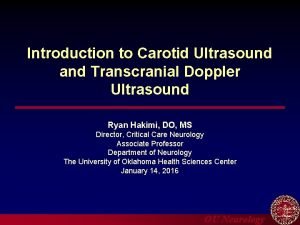Executive Control Network Transcranial Alternating Stimulation t ACS

- Slides: 1

Executive Control Network Transcranial Alternating Stimulation (t. ACS) Modulates Visual Analogical Reasoning Sara Temelkova 1, Shana Ward 1, Emma Sims 1, Robert Cortes 2, Sydney Samoska 1, Adam Green 2, Robert G. Morrison 1 1 Loyola University Chicago. 2 Georgetown University Introduction Visual Analogy • Analogical reasoning involves generating novel connections between representations from semantically different domains within the constraints of a particular analogical mapping. • Extant research has demonstrated that analogical reasoning is a key component of creative cognition, from the arts to the sciences. • Past theory and research have suggested that connectivity within the Executive Control Network (ECN) may be important for analogical reasoning and its development. However, the evidence linking brain networks to analogical reasoning performance has thus far been correlational. • Previous research has found that the ECN oscillates at theta frequency, and theta t. ACS to ECN improves WM Goal • Stimulate the ECN with t. ACS to enhance verbal and visual analogical reasoning. • 1 m. A t. ACS at theta frequency (6 Hz) to left DLPFC and left PPC. Total N=118, betweensubjects, double-blind design • 3 conditions: (1) Sham (2) Synchronized (3) Desynchronized Methods N=40 N=41 N=37 + Working Memory ** F=5. 91, p=. 0036 F=0. 37, p=. 69 + Verbal Analogy F=1. 63, p=. 20 Results • No effect of stimulation condition on verbal analogical reasoning or working memory. • Desynchronized stimulation enhanced visual analogical reasoning. • There were no differences based on different trial types. The results do not change when controlling for Fluid or Crystallized Intelligence. Conclusion • These findings support a causal role of the ECN in visual analogical reasoning • Raise the question: Does 180 -degree out of phase stimulation truly ‘desynchronize’ cortical oscillations between brain regions? • Concurrently recorded EEG data will be analyzed to help understand the actual effects of the administered stimulation.

